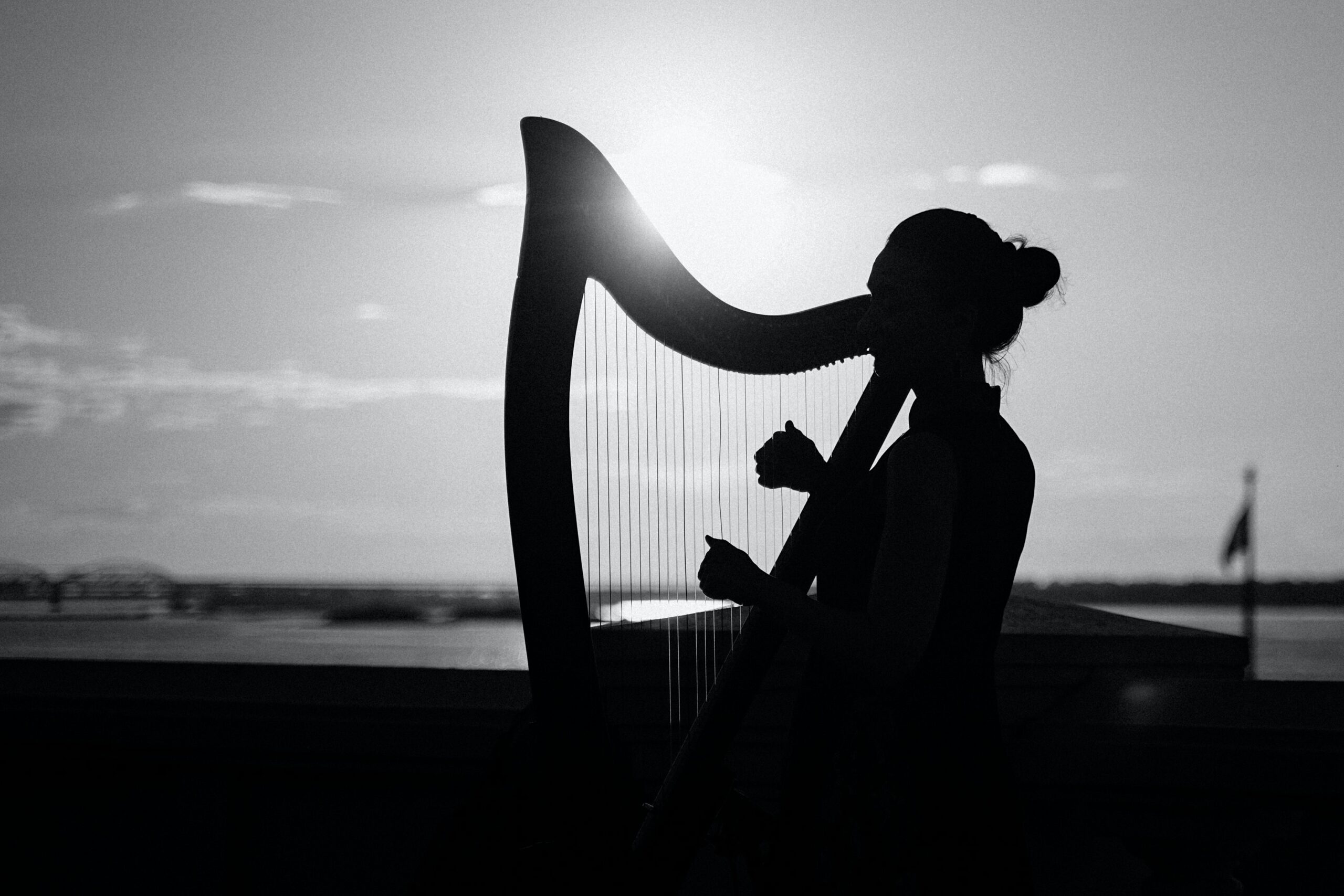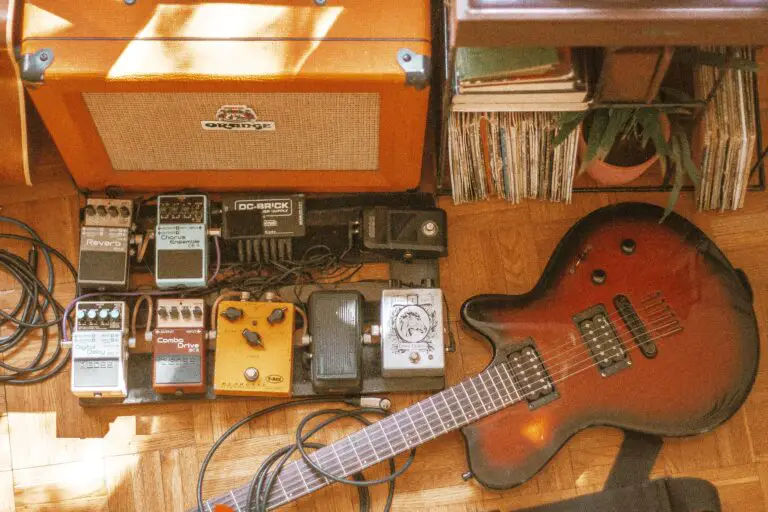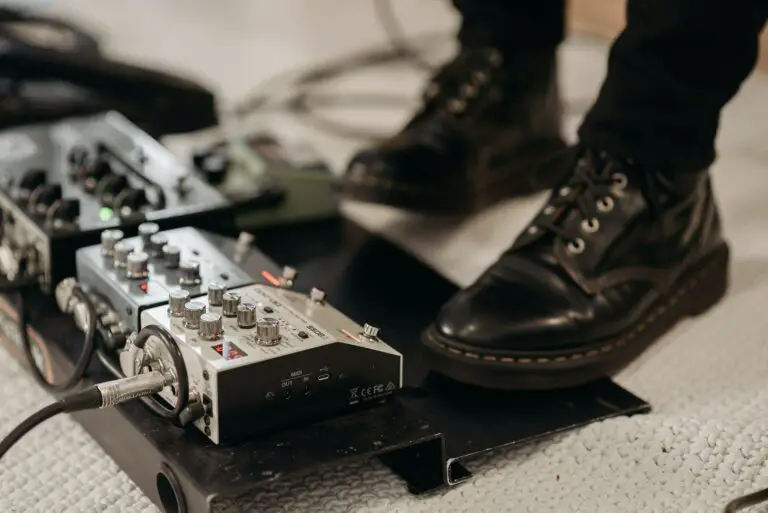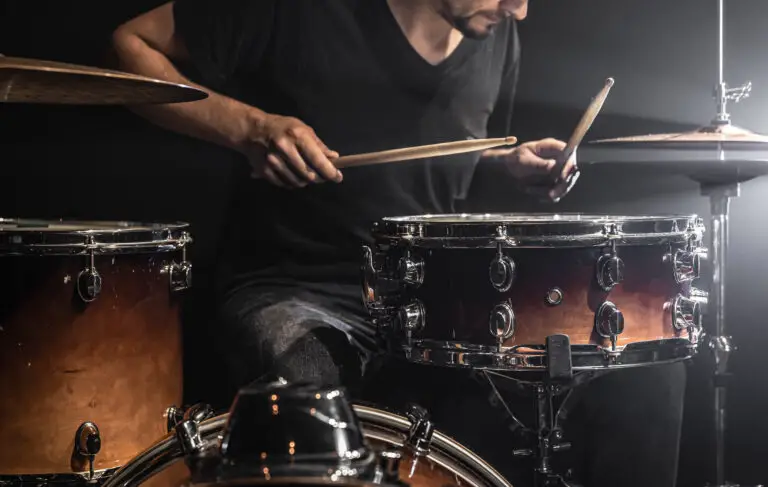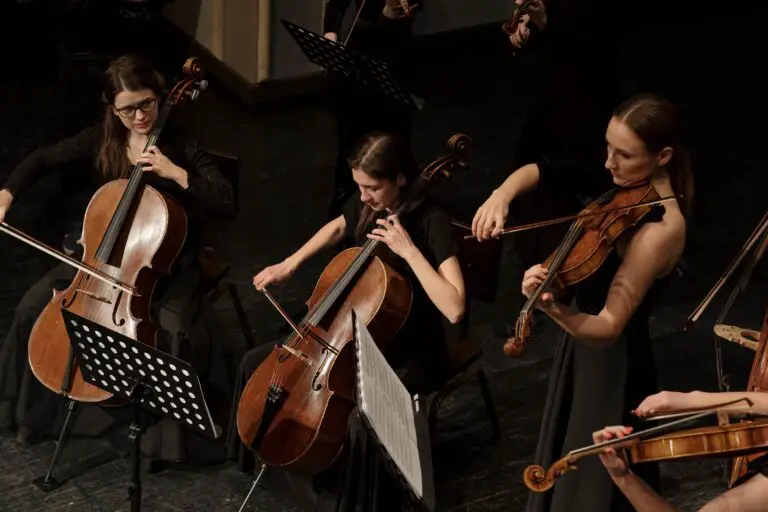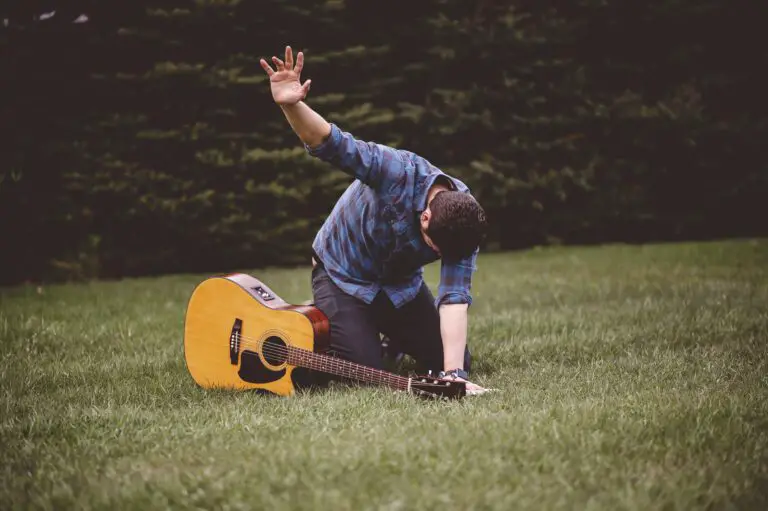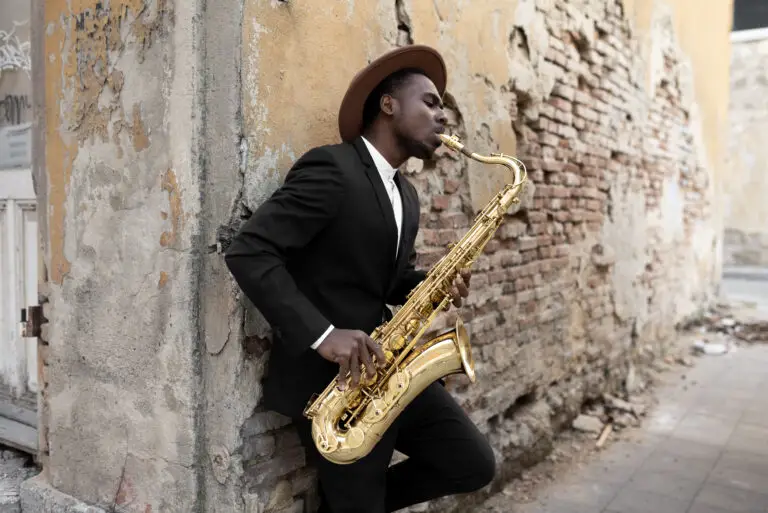How Long Does It Take To Learn The Harp?
Ever been mesmerized by the dreamy tones of a harp and wondered, “How long would it take me to play that?” Well, you’re in for a journey!
For some, strumming simple tunes might be a year’s gig with dedication. Aspiring for concert stages? That’s a longer haul, often spanning many years.
While basic proficiency can be achieved in a year or two, true mastery can take most over 10 years of dedication at the harp.
Regardless, the harp’s allure is undeniable. Ready to dive in? Let’s unravel the mystique of mastering this celestial instrument.
What Are The Different Types of Harps?
The harp, often pictured as the emblematic instrument of angels, has seen many evolutions throughout history.
From the primeval bow-shaped harps of ancient Egypt to the grand orchestral harps in modern concert halls, this instrument has a rich tapestry of variations.
Two of the most common types are the pedal harp and the lever harp, each with its own distinct characteristics.
Pedal Harps vs. Lever Harps: Key Differences
- Mechanism: Pedal harps, often seen in professional orchestras, come with foot-operated pedals that adjust the pitch of the strings. There are seven pedals, one for each note in the diatonic scale. Lever harps, on the other hand, use levers that are manually flicked to alter the pitch.
- Size & Weight: Pedal harps are generally larger and heavier, sometimes standing over 6 feet tall and weighing upwards of 80 pounds. Lever harps are more compact and portable, making them popular among traveling musicians and beginners.
- Range: With its greater size, the pedal harp typically has a broader range, often having 40 to 47 strings. In contrast, lever harps can have anywhere from 22 to 36 strings.
- Complexity: Pedal harps can play more intricate pieces due to their pedal mechanism, making them a top choice for professional settings. However, the lever harp, with its simpler mechanism, offers a gentler learning curve for beginners.
- Price: Pedal harps are generally more expensive due to their complexity and size. Lever harps, being simpler in design, are more affordable and often recommended for those just starting out.
Sizes and Their Implications for Learners
The size of a harp is not merely an aesthetic choice; it greatly influences the learning and playing experience.
- Portability: Smaller lever harps are easier to transport, making them ideal for those who might need to move their instrument frequently or have limited space.
- Learning Curve: A smaller harp, with fewer strings, can be less intimidating for a beginner. It allows the learner to grasp basic techniques without being overwhelmed.
- Sound Projection: Larger harps, especially pedal harps, tend to have a more resonant sound and better projection. This makes them preferred for performances in larger venues or with orchestras.
- Physicality: Playing a larger harp requires more physical strength and endurance. Thus, younger learners or those with physical constraints might find smaller harps more comfortable.
In essence, the choice between a pedal and a lever harp, or between different sizes, should hinge on the individual’s goals, physical capabilities, and resources.
Both types have their own charm and are capable of producing enchanting music that resonates with listeners.
Determining The Learning Objective For Harps
As you contemplate the journey ahead, understanding your learning objectives becomes paramount, especially when discussing the timeline involved in mastering the harp.
Your motivations and goals will significantly dictate the duration and intensity of your learning trajectory.
Playing for Leisure vs. Professional Pursuits
- Hobbyist Approach: For those exploring the harp purely for enjoyment, a basic proficiency, which can typically be achieved in a year or two of consistent practice, might suffice. Lever harps, being beginner-friendly and less demanding, could be more appropriate, allowing you to navigate through basic melodies and techniques at a gentle pace.
- Professional Path: Aspiring professionals, contrastingly, will likely find themselves on a more extended, rigorous journey to mastery. The pedal harp, with its intricate mechanisms and expansive range, may take several years of dedicated practice and possibly formal education to master, often involving a deep dive into advanced techniques and extensive repertoires.
Understanding Your Musical Goals
- Genre Preference: The genres you lean toward will influence your learning curve. Simpler, folk-style tunes might require less time to learn than complex classical compositions, thus potentially shortening (or lengthening) your learning timeline.
- Time Allocation: How much time you can dedicate to the harp weekly will directly impact how quickly you progress. More practice typically equates to quicker advancement, shortening the time it takes to reach specific milestones.
- Performance Goals: If public performance is a goal, additional time might be needed to hone performance skills and build a repertoire. Those content with personal play might not need to factor this into their timeline.
- Future Aspirations: Your long-term vision will outline the entirety of your learning path. Aiming for professional mastery will naturally entail a longer and more intensive learning period compared to more casual, personal enjoyment-oriented learning.
In essence, while a general timeframe can be proposed, the exact “how long” in learning the harp is deeply intertwined with your purpose, goals, and commitment.
Recognizing and defining these aspects early on will not only give you a rough estimate of your personalized timeline but also provide a clear, motivating path towards your harping ambitions.
Harp Learning Timeline: Basic Skills & Techniques
When assessing the average time it takes to learning a new instrument, you’ll want to break it up into basic skills and essential techniques to master the instrument.
The time invested in these initial stages is crucial in determining your overall trajectory in becoming proficient at the harp.
Hand Position and Finger Technique
- Time Factor: Grasping the proper hand position and mastering basic finger techniques are vital in the initial weeks and months of learning. This foundational skill, when practiced consistently, might take a few months to become second nature.
- Influence on Progress: Good hand posture and finger technique are pivotal, as they influence your ability to move on to more complex pieces smoothly and without strain.
Reading Harp Notation
- Time Factor: Learning to read harp notation can be a varied experience, depending on your prior knowledge of reading music. Beginners to music theory might take several months to comfortably navigate through harp scores, while those with previous music reading experience might find this stage expedited.
- Influence on Progress: Efficiently reading harp notation is fundamental in broadening your repertoire and ensuring that your learning progression isn’t stalled by limited musical accessibility.
Tuning and Maintenance
- Time Factor: The basics of tuning and maintaining a harp can generally be learned within the first few weeks of ownership, especially with consistent practice and possibly quicker with guidance from a teacher or a detailed guide.
- Influence on Progress: Consistently well-tuned harps not only sound better but also enhance your ear training. Understanding basic maintenance ensures the longevity of your instrument, allowing for consistent practice without unwanted breaks, thus maintaining a steady learning curve.
Factors That Influence The Learning Curve
The pathway to mastering the harp is multifaceted, and several factors can impact the speed and efficiency with which an individual progresses.
Answering the question, “How long does it take to learn the harp?” thus becomes a complex puzzle where various pieces, such as age, prior experience, practice habits, and instructional quality, interlock to shape your learning journey.
Age and Prior Musical Experience
- Time Impact: Age and previous musical knowledge can significantly influence the learning speed. Younger learners and those with prior musical experience, especially in reading notation or playing other instruments, might find themselves progressing at a brisker pace.
- Considerations: Adult learners, while possibly facing a steeper learning curve, often bring a depth of commitment and focused attention that can, in certain aspects, accelerate learning. So, while children may quickly adapt to the physical aspects of playing, adults might excel in comprehending theoretical knowledge, thus evening out the learning timeframes across ages.
Practice Duration and Frequency
- Time Impact: The adage “practice makes perfect” holds, especially true for learning the harp. Regular, consistent practice can significantly shrink the time it takes to become proficient.
- Considerations: The quality of practice often supersedes quantity. Efficient, focused sessions, even if slightly shorter, tend to be more productive in mastering skills than prolonged, unfocused practices. Regularity, thereby, becomes a key factor in determining how swiftly one progresses.
Quality of Instruction
- Time Impact: The quality of your instruction is pivotal in determining how effectively and efficiently you learn the harp. High-quality instruction can potentially halve the time needed to grasp complex concepts and techniques.
- Considerations: Whether opting for in-person lessons, online courses, or self-teaching methods, ensuring the chosen approach aligns with your learning style is crucial. Additionally, a structured, progressive curriculum, whether provided by a tutor or an online platform, ensures that you build skills sequentially, preventing learning gaps that might impede progress.
Understanding these factors helps to customize your expectations and learning plan according to your individual circumstances.
Typical Learning Milestones for The Harp
These milestones, while varying slightly among individuals, generally encapsulate common achievements that help to gauge progression and can indicate the duration one might expect to spend at each learning stage.
First Songs and Melodies
- Time Estimate: Within the initial weeks to a few months of structured practice and with basic hand coordination developed, most beginners are able to play simple songs and melodies.
- Significance: Successfully playing your first songs symbolizes the first tangible reward of your practice and boosts motivation. At this stage, it’s not just about the melody but ensuring correct hand position and technique are employed.
Mastering Scales and Arpeggios
- Time Estimate: Mastery of scales and arpeggios may span across several months to even a year or more of consistent practice, especially to play them smoothly and confidently.
- Significance: Scales and arpeggios form the backbone of music theory and technique on the harp. They enhance finger dexterity, establish hand coordination, and provide a solid foundation for exploring varied musical pieces.
Venturing into Advanced Pieces
- Time Estimate: Venturing into advanced pieces typically comes after a few years of dedicated practice and thorough understanding of both technique and theory.
- Significance: Playing advanced compositions often requires a blend of skilled technique, theoretical knowledge, and interpretative skills. This stage is a testament to the consolidation of learned skills and provides a platform to showcase your artistic flair.
| Milestone | Time Estimate | Significance |
|---|---|---|
| First Songs and Melodies | Weeks to a Few Months | – Initial reward of practice – Motivation boost |
| Mastering Scales and Arpeggios | Several Months to a Year or More | – Enhances finger dexterity and hand coordination – Provides foundational knowledge |
| Venturing into Advanced Pieces | A Few Years | – Demonstrates consolidation of technique and theory – Allows showcasing of artistic expression |
Navigating through these milestones offers a roadmap to your harp-learning journey.
While each individual’s pace may vary, understanding these general checkpoints and their associated timeframes provides a structured framework, guiding your expectations and goal-setting as you progress in your harp endeavors.
What Are Common Challenges for Beginners Learning The Harp?
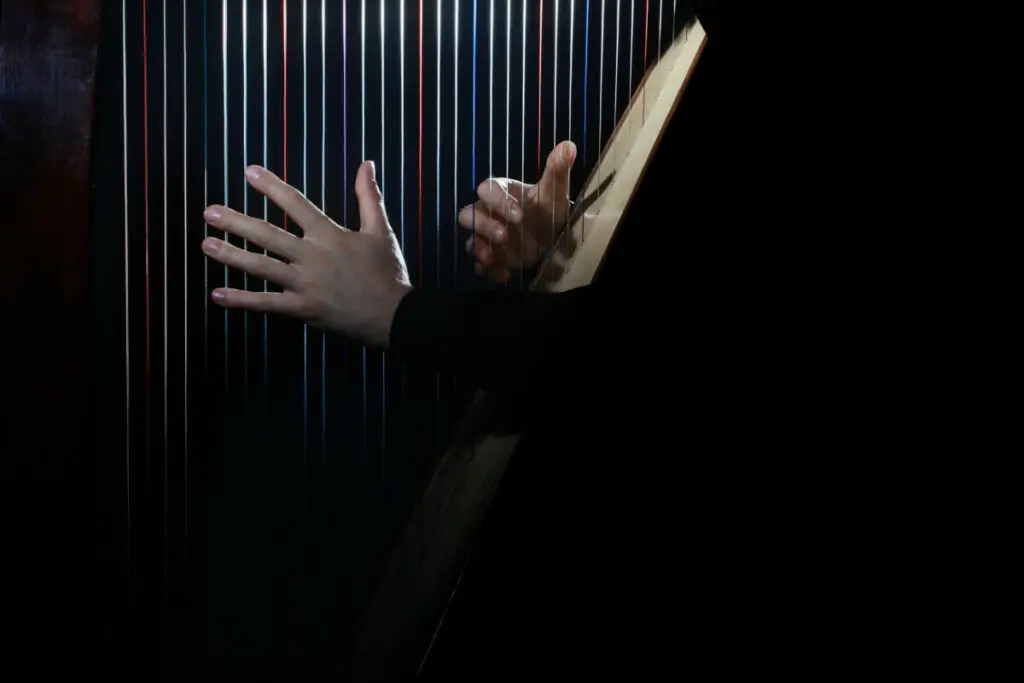
By understanding these common obstacles and implementing strategies to navigate through them, beginners can establish a resilient foundation that stands the test of time and facilitates a smoother, more efficient learning pathway.
Common Mistakes and How to Avoid Them
- Poor Hand Position: A common misstep that can hamper your progression and potentially lead to strain or injury. To avoid this, ensure consistent check-ins with your hand positioning during practice and seek feedback from instructors or through video analysis.
- Neglecting Theory: Some beginners may focus excessively on playing and inadvertently neglect music theory, which is crucial for navigating complex pieces in the future. Balance your practice sessions between practical playing and theoretical learning to build a holistic understanding.
- Inconsistent Practice: Regular, consistent practice is key in solidifying learned skills. Avoid sporadic, intense practice sessions in favor of shorter, frequent, and focused sessions to ensure steady progression.
Overcoming Plateaus in Learning
- Identifying the Plateau: Recognize the signs of a learning plateau, such as stagnation in skill improvement or diminished motivation. Early identification facilitates prompt intervention and strategy adjustment.
- Implementing Variability: Introduce variation into your practice to break monotony and stimulate continued learning. Explore different pieces, experiment with new techniques, or dabble in alternative musical genres to rejuvenate your learning experience.
- Seeking Feedback: Engage in forums, workshops, or lessons where feedback is available. External perspectives can unveil hidden stumbling blocks and offer fresh strategies to re-ignite your learning momentum.
- Setting New Goals: Sometimes, a plateau signals a mastery of current goals and the need for new, elevated targets. Define new learning objectives that stretch your capabilities and rekindle the challenge and excitement in your learning journey.
Encountering challenges and plateaus is an inevitable facet of the learning process.
Understanding, anticipating, and effectively navigating through these hurdles not only enhances your skillset but also fortifies your problem-solving capabilities, aiding in shortening the overall timeframe required to master the harp.
So, even amidst challenges, every pluck, chord, and melody brings you one step closer to harmonious proficiency.
Final Thoughts
Learning the harp is a unique, enriching journey, with timeframes influenced by various factors like practice, dedication, and instruction quality.
While challenges and milestones are inevitable, each player’s path unfolds distinctly, creating a musical experience that’s profoundly personal. Whether mastering a melody in months or conquering compositions over years, every note played weaves into your own harmonious narrative.
Cheers to each learner, crafting their melody, one string at a time!

